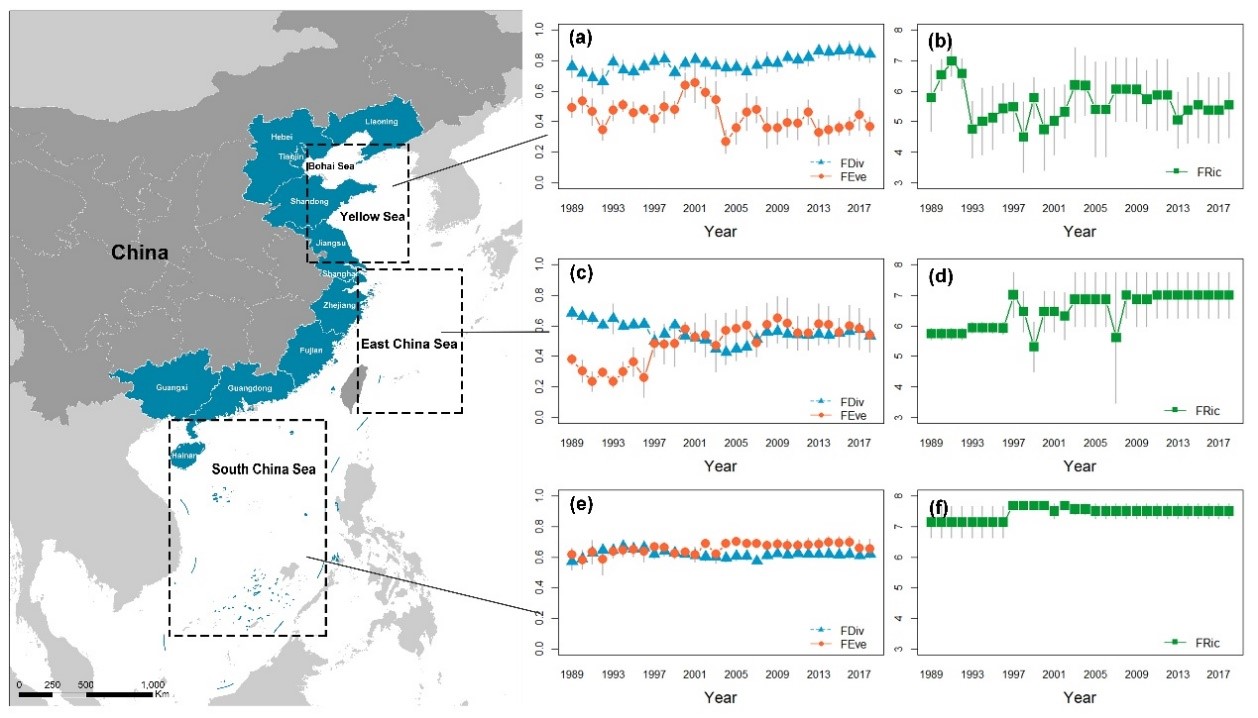Highlights
Climate Change and Fishing are Pulling Functional Diversity of World's Largest Marine Fisheries to Opposite Extremes
There is an increasing threat to marine biodiversity from overfishing and climate change, but how these forces have impacted functional diversity (FD) in marine fish is not clear.
Recently, a research team led by Prof. XU Jun from the Institute of Hydrobiology (IHB) of the Chinese Academy of Sciences demonstrated that the FD of commercial marine fish communities significantly responds to climate warming and increasing fishing pressure with opposite effects driven by different response patterns of fish species or species groups. This study was published online in Global Ecology and Biogeography.
To explore how the FD of commercial marine fish communities responds to climate change and fishing pressure, the research team used a catch database of four individual species and 12 species groups that were reported continuously in China from 1989 to 2018. They selected seven traits to calculate the FD, and found that low-trophic level pelagic fish species or species groups are closer to the boundaries of the functional trait space than high-trophic level demersal fish species or species groups.
The researchers then adopted generalized linear mixed models (GLMMs) to analyze the pluralized relationship among climate change, fishing pressure, and several metrics of marine fish FD. The results showed that climate change and fishing pressure exerted statistically significant opposing effects on the functional evenness (FEve) and functional divergence (FDiv) of commercial fish communities.
"Increasing sea surface temperature had a significant positive impact on FEve but a negative effect on FDiv. By contrast, increasing fishing pressure had the opposite impact on FEve and FDiv," said Prof. Xu.
By removing individual species or a species group from the dataset, the researchers identified the percent change in diversity for communities to assess the relative contribution of each species or species group. They found that the contribution of low-trophic level fish to functional space was significantly higher than that of high-trophic level fish.
As a consequence of global overdevelopment of capture fisheries and increasing climate change in recent decades, this study will not only provide a better understanding of the broad-scale drivers of the changes in the functional diversity of marine fish communities, but will also contribute to the sustainable conservation and management of global marine fisheries and biodiversity.

Trends of functional diversity for the China seas over the past 30 years. (Image by IHB)
(Editor: MA Yun)